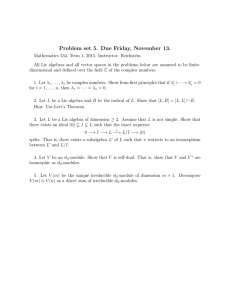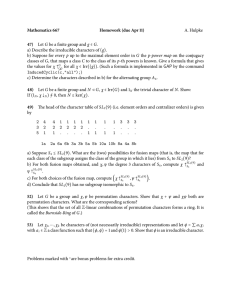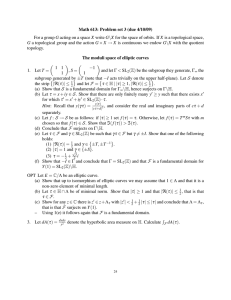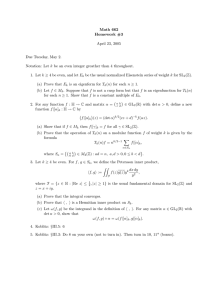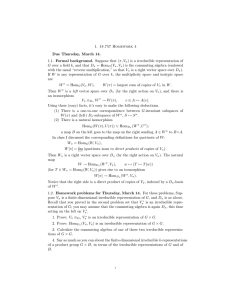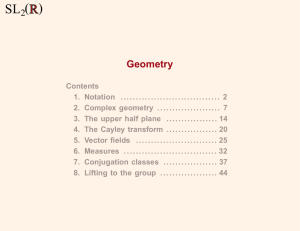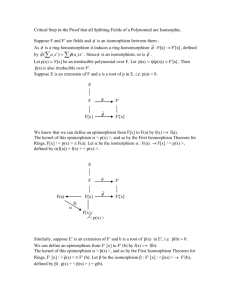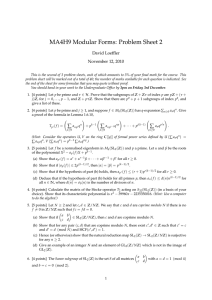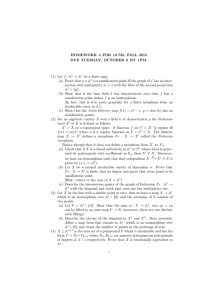HOMEWORK 5 FOR 18.745, FALL 2012
advertisement
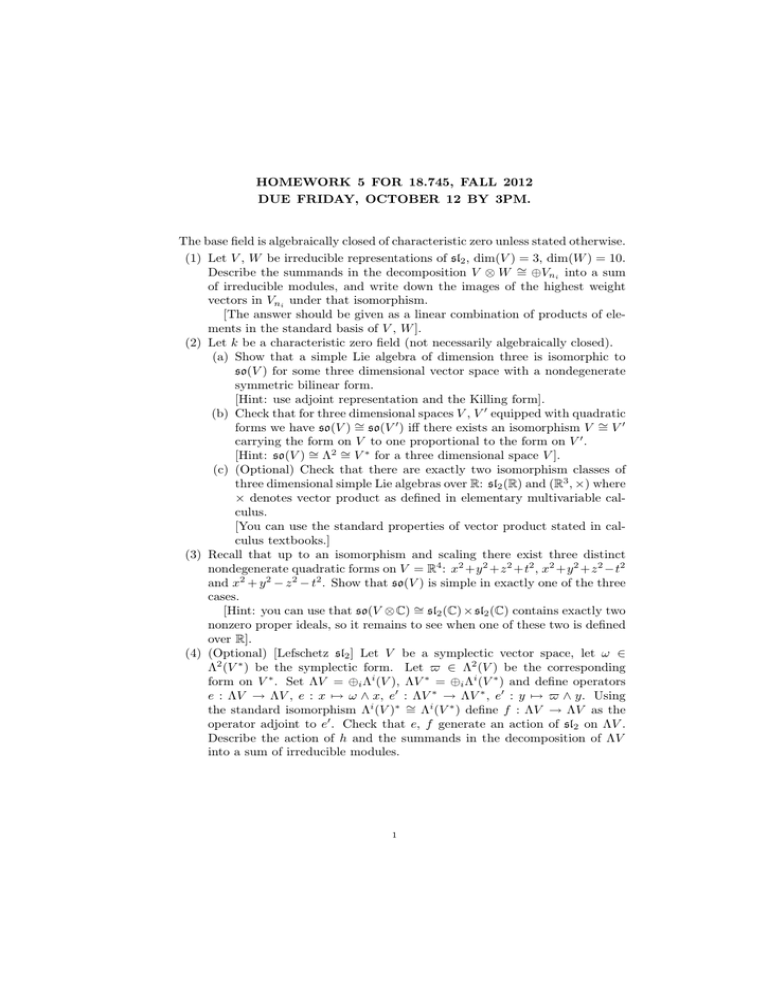
HOMEWORK 5 FOR 18.745, FALL 2012 DUE FRIDAY, OCTOBER 12 BY 3PM. The base field is algebraically closed of characteristic zero unless stated otherwise. (1) Let V , W be irreducible representations of sl2 , dim(V ) = 3, dim(W ) = 10. Describe the summands in the decomposition V ⊗ W ∼ = ⊕Vni into a sum of irreducible modules, and write down the images of the highest weight vectors in Vni under that isomorphism. [The answer should be given as a linear combination of products of elements in the standard basis of V , W ]. (2) Let k be a characteristic zero field (not necessarily algebraically closed). (a) Show that a simple Lie algebra of dimension three is isomorphic to so(V ) for some three dimensional vector space with a nondegenerate symmetric bilinear form. [Hint: use adjoint representation and the Killing form]. (b) Check that for three dimensional spaces V , V 0 equipped with quadratic forms we have so(V ) ∼ = so(V 0 ) iff there exists an isomorphism V ∼ =V0 0 carrying the form on V to one proportional to the form on V . [Hint: so(V ) ∼ = Λ2 ∼ = V ∗ for a three dimensional space V ]. (c) (Optional) Check that there are exactly two isomorphism classes of three dimensional simple Lie algebras over R: sl2 (R) and (R3 , ×) where × denotes vector product as defined in elementary multivariable calculus. [You can use the standard properties of vector product stated in calculus textbooks.] (3) Recall that up to an isomorphism and scaling there exist three distinct nondegenerate quadratic forms on V = R4 : x2 +y 2 +z 2 +t2 , x2 +y 2 +z 2 −t2 and x2 + y 2 − z 2 − t2 . Show that so(V ) is simple in exactly one of the three cases. [Hint: you can use that so(V ⊗ C) ∼ = sl2 (C) × sl2 (C) contains exactly two nonzero proper ideals, so it remains to see when one of these two is defined over R]. (4) (Optional) [Lefschetz sl2 ] Let V be a symplectic vector space, let ω ∈ Λ2 (V ∗ ) be the symplectic form. Let $ ∈ Λ2 (V ) be the corresponding form on V ∗ . Set ΛV = ⊕i Λi (V ), ΛV ∗ = ⊕i Λi (V ∗ ) and define operators e : ΛV → ΛV , e : x 7→ ω ∧ x, e0 : ΛV ∗ → ΛV ∗ , e0 : y 7→ $ ∧ y. Using the standard isomorphism Λi (V )∗ ∼ = Λi (V ∗ ) define f : ΛV → ΛV as the 0 operator adjoint to e . Check that e, f generate an action of sl2 on ΛV . Describe the action of h and the summands in the decomposition of ΛV into a sum of irreducible modules. 1

